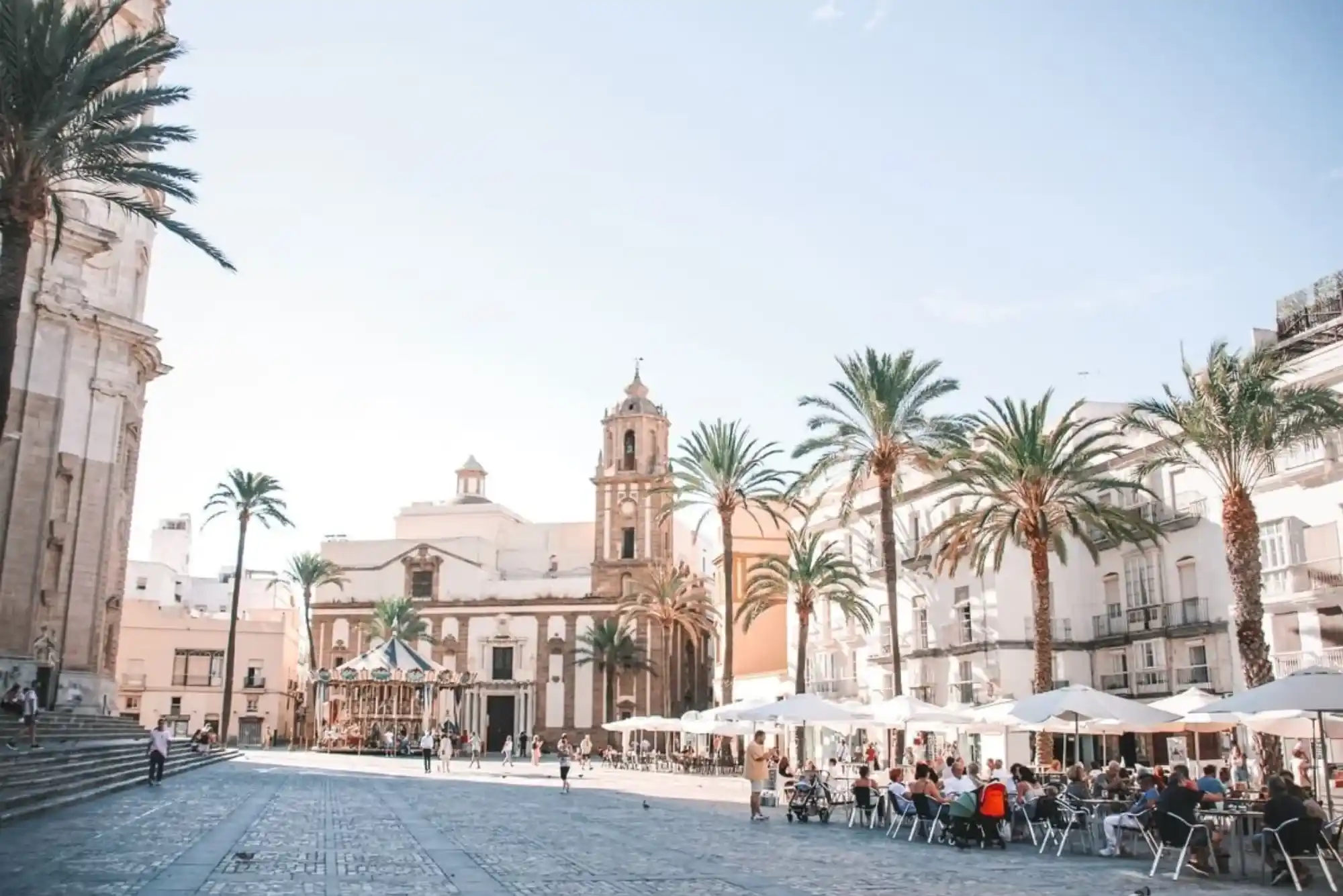The Ancient Beginnings of Cádiz
Cádiz, one of the oldest continuously inhabited cities in Europe, boasts a history that dates back over 3,000 years. Founded by the Phoenicians around 1100 BCE, this coastal gem was originally known as Gadir. Its strategic location on the Atlantic coast made it a vital hub for trade and cultural exchange. The Phoenicians established Cádiz as a trading post, connecting the Mediterranean with the Atlantic, and leaving behind a legacy of maritime prowess and cultural influence.
Roman Cádiz: A Flourishing Port City
Under Roman rule, Cádiz, then called Gades, flourished as a prominent port city. The Romans recognized its strategic importance and invested in its development, constructing aqueducts, amphitheaters, and temples. The city became a center of commerce, exporting goods such as salted fish and garum, a prized fish sauce. Visitors today can still explore remnants of this era, including the Roman Theater, which stands as a testament to Cádiz’s historical significance.
The Moorish Influence on Cádiz
In the 8th century, Cádiz fell under Moorish control, marking a new chapter in its history. The Moors introduced advanced agricultural techniques, architectural styles, and cultural practices that left a lasting impact on the region. The city’s layout, with its narrow winding streets and whitewashed buildings, reflects this Moorish heritage. This period also saw the blending of Islamic and Christian traditions, shaping the unique cultural identity of Cádiz.
The Age of Exploration and Cádiz’s Golden Era
The 15th and 16th centuries marked a golden era for Cádiz as it became a key port during the Age of Exploration. Christopher Columbus embarked on several of his voyages to the New World from Cádiz, solidifying its role as a gateway to the Americas. The city’s wealth grew exponentially as it became a hub for trade and exploration. This period also saw the construction of impressive fortifications to protect the city from pirate attacks and foreign invasions.
The 18th Century: Cádiz as a Commercial Powerhouse
By the 18th century, Cádiz had established itself as a commercial powerhouse, rivaling other major European ports. The city’s prosperity was fueled by its monopoly on trade with the Americas, granted by the Spanish Crown. The bustling port attracted merchants, sailors, and adventurers from around the world, creating a cosmopolitan atmosphere. The iconic Cathedral of Cádiz, with its golden dome, was constructed during this period, symbolizing the city’s wealth and influence.
The Role of Cádiz in the Spanish Constitution
Cádiz played a pivotal role in Spanish history during the early 19th century. In 1812, amidst the Peninsular War, the city became the birthplace of the Spanish Constitution, known as “La Pepa.” This groundbreaking document, drafted by the Cortes of Cádiz, established principles of democracy and individual rights, making it a landmark moment in Spanish history. Visitors can explore the Oratory of San Felipe Neri, where the constitution was debated and signed.
The Decline and Revival of Cádiz
Following its golden era, Cádiz experienced a period of decline in the 19th and early 20th centuries. The loss of Spain’s American colonies and the rise of other ports contributed to its diminished importance. However, the city underwent a revival in the mid-20th century, focusing on tourism and cultural preservation. Today, Cádiz is celebrated for its rich history, vibrant festivals, and stunning coastal scenery.
Exploring Cádiz Today
Modern-day Cádiz offers a unique blend of historical charm and contemporary vibrancy. Visitors can wander through the historic Old Town, with its picturesque plazas and lively markets. A Free tour Cádiz provides an excellent opportunity to delve into the city’s fascinating past while enjoying its present-day allure. From the Torre Tavira, offering panoramic views, to the bustling La Caleta Beach, Cádiz has something for everyone.
The Significance of Cádiz’s Festivals
Cádiz is renowned for its lively festivals, which reflect its rich cultural heritage. The Carnival of Cádiz, one of the most famous in Spain, showcases the city’s love for music, humor, and creativity. This annual event attracts visitors from around the world, offering a glimpse into the vibrant spirit of Cádiz. Other festivals, such as the Holy Week processions, highlight the city’s deep-rooted religious traditions.
The Culinary Delights of Cádiz
No visit to Cádiz is complete without indulging in its culinary delights. The city’s cuisine is a reflection of its maritime heritage, with fresh seafood taking center stage. From fried fish and shrimp fritters to the iconic Cádiz-style tuna, the flavors of the region are sure to tantalize your taste buds. A Free walking tour Cádiz often includes stops at local eateries, allowing visitors to savor the authentic tastes of the city.
Lessons from Cádiz’s History
The history of Cádiz offers valuable lessons about resilience, cultural exchange, and the importance of preserving heritage. Despite facing challenges and periods of decline, the city has managed to retain its unique identity and charm. Its story serves as a reminder of the enduring impact of history on shaping the present and future.
Conclusion: The Modern Relevance of Cádiz
Cádiz is more than just a city; it is a living testament to the passage of time and the resilience of human spirit. Its rich history, from ancient Phoenician roots to its role in shaping modern democracy, offers insights into the complexities of cultural evolution. By exploring Cádiz, visitors not only uncover the past but also gain a deeper appreciation for the interconnectedness of history and modernity. Whether through a free tour Cádiz or simply wandering its streets, the city invites you to embark on a journey through time.













